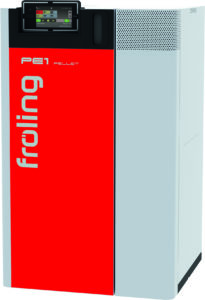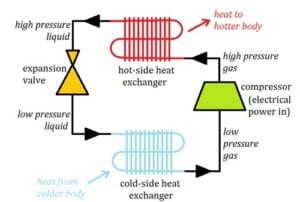Modern Wood Heat vs. Cold Climate Heat Pumps: Which Is Better?

Tucked away in basements and utility rooms, boilers and furnaces quietly emit about 75% of household carbon dioxide emissions. Making large reductions in household carbon footprints requires de-fossilizing home heating systems. Homeowners are in luck because new wood pellet boilers and furnaces, aka modern wood heat and cold climate air-source heat pumps (ASHPs), can eliminate or dramatically reduce fossil fuel carbon dioxide emissions.
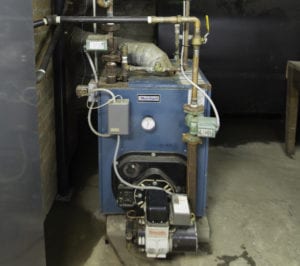
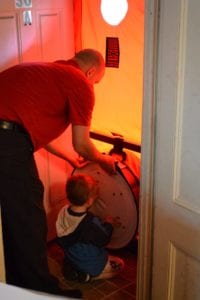
Home heating updates should always start with energy conservation. Energy audits are excellent for learning how to reduce energy needs. Insulation and air sealing can yield immense benefits for comparatively low costs. Simple practices like turning thermostats down or using programmable thermostats can also have a sizeable impact on fuel use and carbon dioxide emissions.
Three Easy Steps to Start Weatherizing Your Home
Still, a heat source will be required unless a home requires zero net energy, like passive houses. Furnaces and boilers generally last about 20 years, which means for many of us, a heating system swap is around the corner. End-of-life for outdated technology also presents a perfect opportunity to stop using fossil fuels.
Modern wood heat and cold climate heat pumps provide the ability to eliminate fossil fuels while staying toasty with all of the convenience of gas, oil, and electric resistance heat. What technology should be considered when it is time to replace the furnace or boiler? This article will address comfort, convenience, cost, and carbon and environmental factors for each option.
Wood Pellet Boilers and Furnaces, aka Modern Wood Heat
Wood pellet boilers and furnaces use pellets to produce heat. This heat warms air or water, which circulates through your home to warm every room. The fuel source makes them an environmentally friendly and reliable choice. Modern wood pellet boilers operate quietly with minimal smoke, making them popular home heating systems.
Learn more about the benefits of wood pellet boilers and furnaces with an overview of four major categories.
 Comfort
Comfort
Modern wood heat provides exactly the same heating comfort as fossil fuel heating systems, responding to conventional thermostats automatically. The quality of the heat is unchanged from fossil fuel heat.
Further easing the transition to renewable heating, existing ductwork, radiators, in-floor tubing, and domestic water are heated no differently than while using fossil fuel furnaces and boilers. Unfortunately for some homeowners with antiquated heating systems, no residential wood pellet boilers produce steam.
Another comfort offered by modern wood heating provides, is knowing that fuel purchases support the local economy and retain wealth in our communities. Using wood pellet fuel helps provide markets for waste wood. Using waste wood helps economically upstream by creating higher value for wood. This higher value provides more reasons for forests to stay forested rather than being sold for development. New England loses 65 acres of forest daily to development. Providing tangible, market-based incentives to retain our forestland is important.
Convenience
Modern wood heat takes advantage of the consistency of shape, size, and hardness of pellets to provide conveniences that are difficult to impossible with other wood fuels. Wood pellet boilers respond to room thermostats and make hot water while filling, igniting, and de-ashing automatically. Fuel is delivered through hoses from delivery trucks directly into a holding bin.
Homeowner involvement is only required to order more fuel and to remove the ash box about once every six weeks, depending upon fuel consumption. Internet connectivity is standard, with push notifications indicating when it is time to take ash out and to notify if there are any problems. Modern wood heat becomes practically forgettable.
If you're replacing an existing oil or natural gas boiler, you get the convenience of modern-day technology. The only difference will be the fuel source.
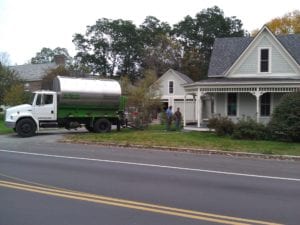
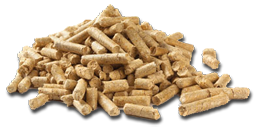 Cost
Cost
Wood pellet fuel is typically substantially less expensive than oil, gas, and electric heat. On average, wood pellets cost 30% to 50% less than fossil fuels. Fuel savings add up quickly and typically more than pay for higher up-front costs of modern wood heat. The more oil and gas consumption that is replaced with wood pellets, the greater the savings can be.
While modern wood heat generally has higher maintenance costs than oil and gas, fuel savings offset these costs over time. State rebates, tax holidays, and other incentives can offset large portions of installation costs. You can find state rebates and federal tax credits for new installations of residential modern wood heat.
Wood pellet boilers and furnaces can also run on the same infrastructure as oil or natural gas systems, meaning you won't have to replace your entire heating system, saving on installation costs.
Carbon and Environment

Wood pellet fuel is part of our terrestrial carbon cycle. While trees grow, they absorb carbon from the atmosphere. After harvest, some trees become lumber, which when turned into long-term products such as homes and furniture, lock carbon away for a long time. Other forest products like bark mulch, sawdust, and paper may have shorter life spans and typically release carbon back to the environment quicker.
Wood with no higher use is often used for energy, such as wood pellets. When wood pellets are used for heating, about 80% of the available energy becomes heat. Almost all of the carbon in the wood is released into the air as carbon dioxide during combustion. As long as forests are not losing more wood or are gaining wood as wood pellets are used, the carbon cycle remains virtually neutral.
In many regions, particularly in Northeastern United States forests, this neutral carbon cycle has been in place for decades. The biggest threat to the neutral carbon cycle today is human-caused development and other complete losses of forests due to invasive species and climate change, not the use of wood for heating.
When wood pellets are burned, other gasses and particulates (aerosol-sized particles) are emitted. While no exhaust is benign, due to advanced controls used in modern wood heaters, particulates are low in toxicity compared to fossil fuels and old-fashioned wood burning. Due to its cleanliness, modern wood heat can also be considered an excellent choice for replacing older cordwood boilers, furnaces, and stoves made before the Environmental Protection Agency (EPA) approval process.
Often unheralded, the benefits of using nontoxic, natural wood are real and beneficial. Harvesting fuel from the communities we live in and transporting, processing, and storing wood fuel is far safer than with fossil fuels
The Role of Forest Biomass in Addressing Climate Change - Webinar Presented by Dr. Robert Malmsheimer
Cold Climate Air-Source Heat Pumps
Air-source heat pumps transfer heat using a refrigerant. They extract heat from the air around your house and transfer it to the coolant, which compresses and rises in temperature. As the coolant travels to your heat pump's indoor unit, air passes over it and heats up. This heated air gets circulated around the home to keep it warm. Heat pumps are convenient to use and have relatively low costs to operate and maintain.
Learn more about heat pumps and compare them to modern wood heat.
Comfort
Cold climate air-source heat pumps can replace existing fossil fuel furnaces, boilers, and electric heat pumps with some limitations. Using electricity, air-source heat pumps capture and concentrate heat in the air (even very cold air) by using refrigerants and compressors. Think of heat pumps as reverse refrigerators. They can be ducted like a traditional furnace, can make hot water like a boiler, or can be more simple, small area heaters, often called mini-splits.
In modern homes, small homes, and older homes with good insulation and air sealing, cold climate heat pumps can excel. Some heat pumps convert heat from the ground or groundwater for home heat. These are typically called ground-source heat pumps (GSHPs). This article does not address GSHPs due to their relatively slow market adoption rates compared to ASHPs.
Mini-split ASHPs can be installed with one or more wall-mounted “heads,” which blow hot air into rooms or areas of a home. Mini-splits may be used to keep heavily used areas of a home, such as a living or family room, warmer than other home spaces, such as bedrooms, so that the furnace or boiler can run less often.
However, ASHPs may struggle in some applications. Temperature output from heat pumps is lower than oil, gas, and electric resistance heat, so heat distribution designed for low temperatures, such as radiant floor heating, is beneficial for heat pumps. In older homes or homes designed for high-temperature heat distribution, ASHPs may not keep homes comfortable on colder days.
Current technology limits ASHP hot water output to about 140 degrees, whereas traditional boilers operate at 180 degrees. A performance paradox of ASHP technology is that as outdoor temperatures drop, particularly below 10 degrees, heat output and efficiency decrease. It costs more to make less heat. For that reason, often, cold climate heat pumps are supplemented with another form of heat for the coldest weather.
ASHPs can also increase comfort by eliminating fossil fuels and combustion, the hazards of toxic fuels, exhaust, and fire danger. These safety and environmental benefits add to peace of mind.
Convenience
ASHPs are the ultimate in heating convenience. They respond to conventional room thermostats. Operation is completely automatic. There is no on-site fuel storage, so there is potentially one less energy provider to deal with. Some maintenance is required, but it is minimal compared to combustion appliances.
On the other hand, in areas that regularly have temperatures below zero, a heat pump won't be able to provide sufficient heat. You may need a separate system, like a boiler or furnace, to keep your home warm. Having multiple systems may add extra maintenance and the need to switch back and forth between heating systems.
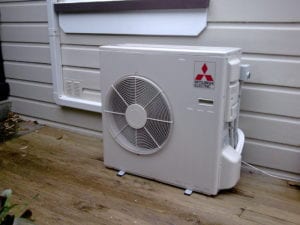
Cost
Heat pumps use electricity to produce heat. Operational costs depend upon outdoor temperature, house size, insulation, and the cost of electricity.
Generally speaking, heat pumps should save money compared to oil and gas, but the degree of savings varies. Part of the popularity of heat pumps is the ability to provide power from solar and other renewable sources such as wind and hydroelectric. Because cold climate heat pumps may work hardest when there is no sun and during colder temperatures, the use of the power grid and utility billing policies will impact savings.
Cold climate heat pumps can range broadly in price depending upon the type of installation. In general, heat pumps cost more than oil and gas systems to install and cost about the same as wood pellet systems.. As with wood pellet boilers, heat pumps may receive tax credits, rebates, and other incentives that can reduce up-front costs. Mini-split heat pumps can be relatively inexpensive compared to a new boiler or furnace.
When heating small or well-insulated spaces, a mini-split may provide all of the required heat, making for a very affordable heating transition. Installing ducted or air-to-water heat pumps can be expensive, potentially twice as expensive as a conventional boiler or furnace.
Operationally, service and maintenance costs are low compared to oil and gas heating because heat pumps use no combustion.
Carbon and Environment
ASHPs are not renewable energy. Heat pumps require significant amounts of electricity to produce heat. In ideal installations, ASHPs can produce, on average ,three times as much energy as they consume, which means heat pumps use electricity to produce heat very efficiently. If heat pumps are supplied with electricity from renewable sources such as wind and solar, they are nearly carbon neutral.
Household solar arrays are typically inadequate for supplying renewable electricity for heat pump use, especially at night when heating loads are highest. When ASHPs are connected to the power grid, the emissions associated with heat pump use are likely to involve carbon emissions from fossil fuels. As the power grid is supplied by more renewables, ASHP use will produce fewer carbon dioxide emissions.
The local grid operator in New England, ISO New England, is predicting that 18% of home heating will be produced by heat pumps by 2030. It is less well-known what the renewable power segment of the grid will be in 2030, but there seems to be a future gap between renewable power production and power use.
Heat pumps do not use any combustion to make heat, so there are zero emissions at the point of use, making heat pumps environmentally friendly.
Heat pump refrigerants are toxic and can be powerful contributors to the greenhouse effect if they leak. ASHP refrigerants must be handled by licensed experts.
Heat Pump vs. Wood Pellet Boiler: Main Points to Consider
There are many factors to weigh when comparing heat pumps and wood pellet boilers. Each heating system has unique characteristics that influence how it operates. Here's a comparison of the two based on comfort, convenience, cost, and environmental impact.
Comfort
Modern wood heat provides greater comfort for a wider range of buildings in a wider range of climates and specific heating needs than heat pumps. No backup heat is required to stay cozy. For new, smaller, or well-insulated and sealed homes, heat pumps can be just as comfortable. In older houses, heat pumps likely won't provide adequate heat for cozy living on the coldest days. Some backup heat is generally needed to help bridge those cold periods.
Convenience
Cold climate heat pumps offer greater convenience than modern wood heat. With electricity supplying the energy and near-zero homeowner involvement, cold climate heat pumps cannot be beaten for convenience.
Cost
Mini-split cold climate heat pumps are less expensive than modern wood heat, but their heating range is limited. For whole-house heating with larger heat loads and older homes, retro-fitting with a wood pellet boiler or furnace will generally cost less and require fewer heating system modifications than will be necessary for ducted or piped ASHPs.
Carbon and Environment
Modern wood heat is carbon beneficial compared to using fossil fuels. Other emissions from burning wood pellets are low and relatively benign.
Heat pumps using grid electricity that is mostly created by fossil fuels cause a substantial amount of fossil carbon dioxide to be released. If cold climate heat pumps use only renewable power or cause reductions of fossil fuel use overall, they are definitely carbon beneficial. Household solar arrays are typically inadequate for supplying renewable power for heat pump use, especially at night.
Overall Winner?
There is no overall winner. Cold climate heat pumps and modern wood heat should be considered for different applications. Modern wood heat is best for larger heating loads, old homes, and use without major reconstruction of the existing central heating system.
ASHPs should be considered in homes that are smaller or well-insulated and sealed. ASHPs also work better in central heating systems with low-temperature distribution, such as radiant floor heat. Complimentary uses of cold climate mini-split heat pumps and wood pellet central heating could be the best possible renewable heating solution.
FAQs About Wood Pellet Boilers vs. Heat Pumps
Here are a few frequently asked questions about these systems.
Is a Heat Pump More Efficient Than a Wood Pellet Boiler?
Heating efficiency is difficult to compare between pellet boilers and heat pumps. What really matters is economics. Which technology costs less to operate? There are simply too many factors to be able to definitively say. Both technologies are less expensive than oil and gas.
Learn more about wood pellet boilers and their efficiency in our guide.
Can a Heat Pump Replace a Boiler?
The answer is, yes and no. While it is possible for a heat pump to replace a boiler, this may not be the most cost-effective option. One consideration is that replacing a boiler with a heat pump often requires significant system upgrades, particularly in old homes, which may be a significant investment. Replacing an old boiler with a newer one will cost significantly less than switching to a new heating system
Contact Tarm Biomass for Wood Heating
Tarm Biomass provides high-quality wood pellet boilers and more. Our heating systems offer energy independence as well as clean, efficient, and cost-effective operations. Not sure which option is right for you? Our team has extensive expertise in modern wood heating and can work with you to find the ideal wood heating solution.
For more information about cordwood, wood pellet, and wood chip central heating for home, business, and institutional use, contact our team online or call 1-800-STAY-WARM.

